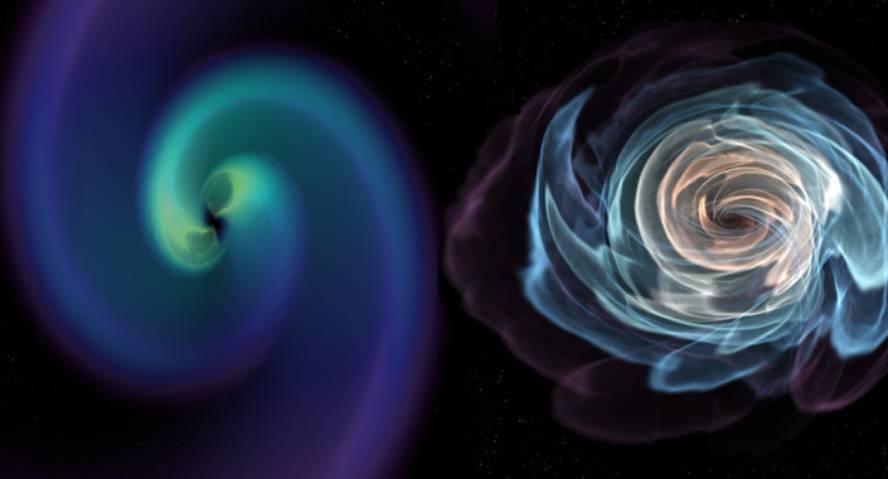Two neutron stars detected by gravitational waves

LIGO and Virgo receive the signal from gravitational waves. The approximate duration was 100 seconds, and two seconds later came the first electromagnetic wave: a gamma ray flash. This wave was collected by the Fermi space telescope. In the coming days and weeks, other types of electromagnetic spectrum waves arrived: X-rays, ultraviolet, optical, infrared and radio waves.
Both LIGO and LIGO and Virgo in their joint observations have not detected electromagnetic waves, only gravitational waves. In total they have been observed four times [Nobel Prize in Physics to those who made the first], and they have always been the result of the clash of black holes. However, the current signal has come along with electromagnetic waves, so it could not be produced by black holes, as black holes do not emit electromagnetic radiation. Otherwise, the signal was different from the previous ones, for example, it was called GW170817, which lasted much longer than the rest, and, analyzing all the data, have realized that it was the product of the shock of two neutron stars.
Neutron stars have much less mass than black holes. The two that have collided have calculated that they had between 10 and 60% more mass than the Sun, but they are much smaller than the Sun, with a diameter of approximately 20 kilometers. They were located in the galaxy called NGC 4993, 130 million light years from Earth.
Through this unprecedented observation, astrophysicists have known many details, including how a kilonova arises: the process of expulsion of matter in such a collision. During this process they have been able to check the formation of heavy elements such as gold and platinum.
But, above all, the research spokesmen have highlighted the birth of a new way of doing astrophysics. It is worth noting the participation of almost 1500 researchers and more than 200 organizations. In addition, the prediction they have made is only a first step, since the analysis of the data received will still provide many data. The first article related to observation has been published in the journal Physical Review Letters.





